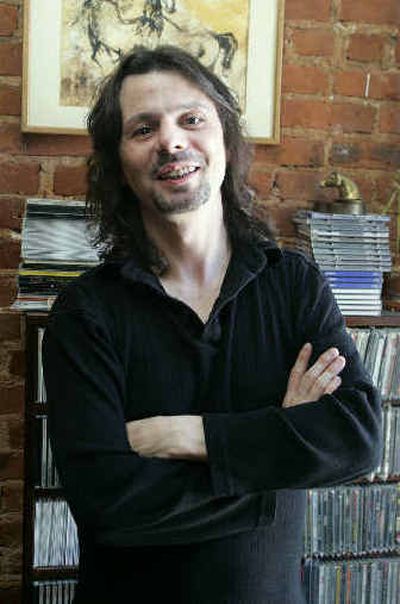A growing health risk: no insurance

NEW YORK — When Arnaud Durieux needed to get his teeth fixed about six months ago, the freelance Web designer caught a flight from New York to his native France.
Since he has no health or dental insurance, he figured this was his best option to get good care at a good price, even factoring in the cost of the airplane ticket. The French dentist charged him about $500 for the crown, compared with the $2,000 he says it would have cost him in New York.
“I usually go back (to France) about once a year. So while I’m there I get my medical checkup and any dental work I need,” said the 37-year-old Durieux. “It’s still cheaper for me to get all that work done in France than getting insurance here and doing it the American way. It’s unfortunate, but that’s how it is.”
Durieux’s is one of many unique strategies that the 45 million uninsured people in the United States employ in an attempt to keep themselves healthy without going broke, as medical and health insurance costs have soared in recent years.
Premiums for family coverage in employer-sponsored plans rose 59 percent between 2001 and 2004, according to the Kaiser Family Foundation, compared with a 9.7 percent growth in consumer prices.
The escalating costs are expected to keep the ranks of the uninsured growing for years to come. A study by researchers at the University of California, San Diego, published Tuesday by the policy journal Health Affairs, predicts that 56 million people in the U.S. — more than one in four American workers — will be uninsured by 2013.
For many younger people who are uninsured, the good health that usually comes with youth makes the risks tolerable. But as middle-age and the aches and pains that come with it encroach, so do fears of huge medical bills from a catastrophic illness or accident.
“It worries me all the time. It doesn’t settle well with me,” said C.J. Holm, a 42-year-old New York woman who is looking for a part-time job that offers health benefits until her new catering business brings in enough money for her to afford coverage.
She beat ovarian cancer in the 1980s — but has had to skip regular checkups because she can’t afford them.
“When I think about it, I feel really guilty,” she says.
For Nancy Twigg, a 38-year-old author and newsletter publisher in Knoxville, Tenn., being uninsured means looking up her symptoms on the Internet when she gets sick, peppering friends who are nurses and pharmacists with questions, and treating whatever she can with over-the-counter medicines.
If disaster strikes, she has faith she’ll be covered by a service called Samaritan Ministries, a group of Christians who send money each month to members of the network with high medical bills.
“We are happy to know that it goes to a family in need, rather than a large insurance corporation,” she said.
When doctor’s visits become unavoidable, she has found a doctor who offers a discount to self-pay patients and recently gave her $1,000 worth of drug samples to treat a case of shingles.
“Had she not done this, I would have just had to tough it out,” she says.
Such toughing it out is an all-too-common phenomenon for people with no insurance, according to Stuart Schear, director of next month’s Cover the Uninsured Week campaign, sponsored by the Robert Wood Johnson Foundation.
Research shows that uninsured people usually put off care for as long as possible, Schear said. “If they are having a health problem, they try to see if they can wait it out. Often that is to their detriment,” he said.
“It’s estimated that nearly 18,000 people in the U.S. probably die each year because they do not have health coverage,” he said.
Experts say most of the uninsured population is composed of people whose employers don’t offer benefits, but who make too much money to be covered by public-health programs and not enough to afford their own coverage.
High medical bills are the second-leading cause of personal bankruptcy, Schear said.
Yet there is a significant number who simply gamble they won’t incur medical bills high enough to justify the soaring costs of insurance.
Paul Keckley, a health-care economist and director of the Vanderbilt Center for Evidence Based Medicine, says research shows this group of gamblers is about 15 percent to 18 percent of the uninsured population and is definitely growing.
For some, “I think there’s maybe a suspicion that modern medicine, quote unquote, is like modern food: There’s a whole lot of chemistry and technology involved and if you can get natural in your approach, perhaps you’re better off,” he said.
That’s how Bonnie Russell, a legal publicist in San Diego, looks at it.
“You gotta look at this stuff pragmatically,” she says. “I knew that when I was younger I would be betting against myself. That’s what insurance is about, betting against yourself.”
But after being diagnosed with skin cancer recently and paying for the treatment herself, she said she had “one of those gut-check feelings” and was looking into insurance policies.
“After I got this I thought that, as time marches on, you gotta rethink it,” she said. “But I had a good run.”